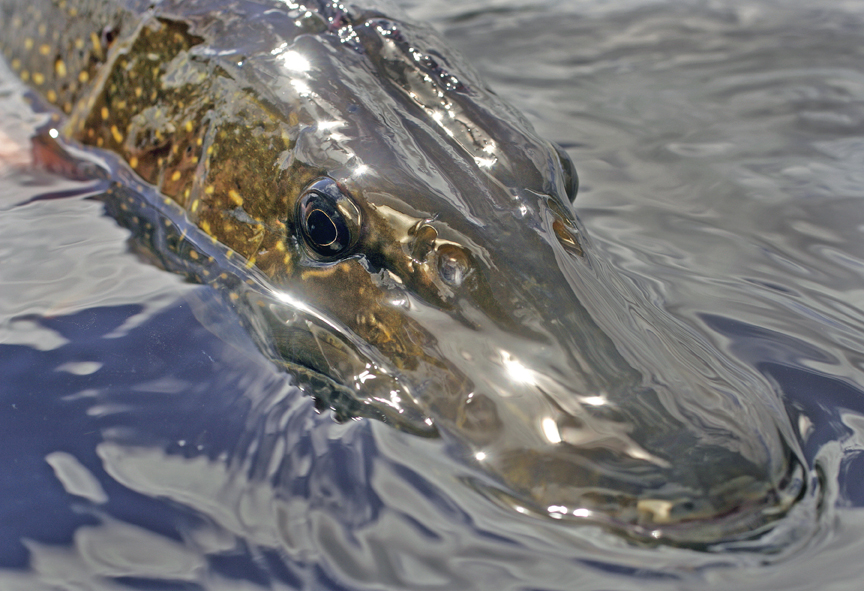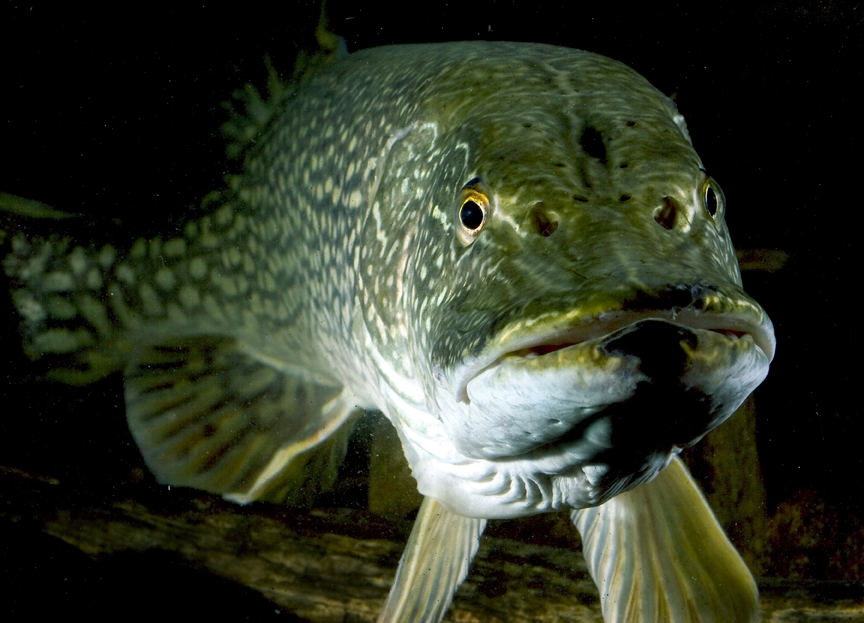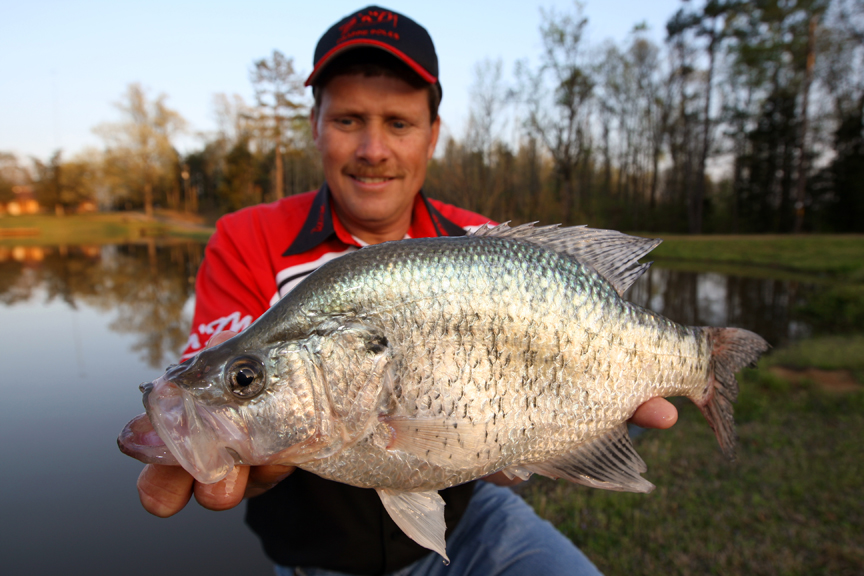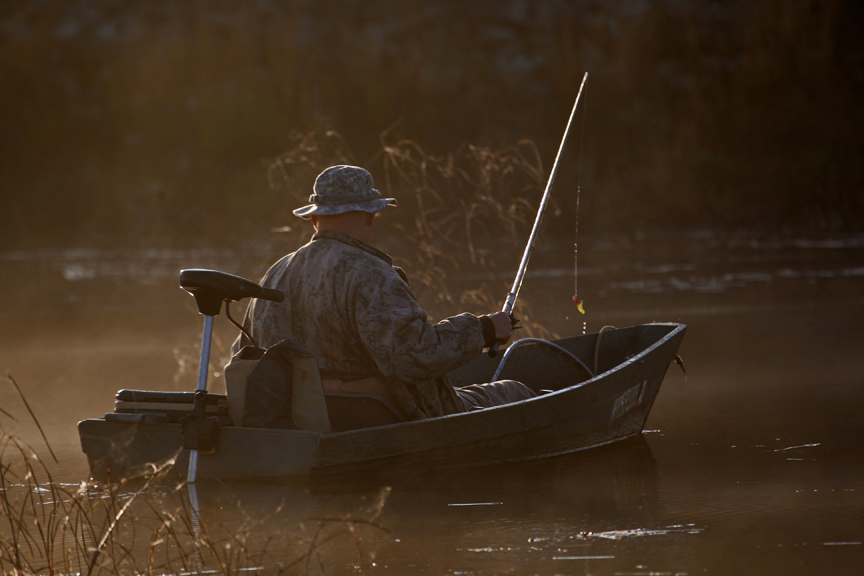January 04, 2012
By Jeff Simpson
F+L+P = Success
Learn How To Catch More And Bigger Fish!
F (Fish) + L (Location) + P (Presentation) = S (Success)

Advertisement
Successful fishing involves understanding three essentials:
F = Fish
L = Location
Advertisement
P = Presentation
The importance of each of these essential elements varies from trip to trip and from hour to hour. The challenge is to place the correct value on each of these three elements at the right time. Master this and you'll take a huge step toward catching fish consistently.
Your objective is to catch fish. Sometimes it doesn't make sense to work on fish in a negative feeding mood when you can switch locations or species and catch fish. Make the right decision for each angling situation you face.
Understanding F (the fish) leads to L (location). Then, P (presentation) leads to Success-catching fish.
 F FACTOR = FISH'S BASIC NATURE
F FACTOR = FISH'S BASIC NATURE
Each fish species responds differently to its environment. This is nature's way of assuring order. Responses are based on the following senses: smell, taste, touch, sight, and hearing. Through these senses, fish respond to stimuli and arrange their basic lifestyle, somewhat predetermined by genetic heritage.
Some fish have distinct teeth; others have sandpaper lips, and still others have rubbery lips. These fish each feed in different areas. Often they are found on different levels in the food chain.
Body shape also plays a role. Long, oval-shaped fish like muskies and pike forage most efficiently in edge habitat where they use a combination of stalking and ambush tactics to catch prey. Bass, in contrast, have a shorter more compact body type and forage more efficiently along edges as well as in cover.
Reproduction, comfort, and food also play a role in determining a fish's place in its environment. Various fish species respond differently to satisfy these needs.
Reproduction: Species require different water temperature and bottom conditions to spawn, or they use the same territories at different times.
Comfort: Species prefer certain water temperatures, light levels, water clarity, and other conditions.
Food: Season, water temperatures, weather conditions, and other circumstances prompt feeding. Food preferences and a balance between predator and prey are also important. A walleye may prefer perch as forage. If perch are not available, walleyes may move to find a different prey.
Each species is different. So to catch fish consistently, you must fish for each species differently. Understanding the basic -nature of each species of fish is a vital fishing factor.
 L FACTOR - LOCATION
L FACTOR - LOCATION
Fish adjust their behavior according to needs that are part of their basic nature. Each species displays its own unique movements on a daily and seasonal basis.
Seasonal movements or migrations may be major shifts in location. These movements usually relate to spawning, seasonal changes in water level or temperature, and to seasonal movements of prey. While yearly fish movements are often predictable, their timing usually depends on climatic conditions.
The features of a fish's environment that affect location are: structure of a body of water, interaction between fish species, and reaction to outside stimuli, principally weather and man.۬۬Structure۬۬Structure involves elements like bottom configuration, bottom content, water characteristics, vegetation, and water movement.
Bottom Configuration-How is the body of water shaped? Is it deep? Is it shallow? Does it have sharp breaks (drop-offs), or does it have slow tapering breaks? Does it have an inlet, an outlet, or both? Is the lake or pond round or long and thin? Are there points and bends?
Bottom Content-Is there rock, sand, gravel, silt or muck? Are there sunken trees or brush piles?
Water Characteristics-Oxygen level and water clarity bear on fish location. Decaying matter reduces oxygen content and forces fish to seek shallower water.
Water clarity has several major effects on fish location and behavior. Stained-water fish rely on a mixture of sight, hearing, and feel to locate prey; while clear-water fish may be more sight oriented. Dark-water fish may be more vibration conscious. Vision, sound, and vibration play a role in lure selection.
Vegetation-Are there weeds? The points and pockets of weed patches and their density or sparseness are a part of structure.۬۬Water Movement-Water coming into or leaving a body of water affects fish location, especially if the movement is quick, as in many rivers and impoundments. In lakes the effects are more subtle.
Species Interaction
Species interaction involves density of population, availability of food, competitive species, and how these interrelate.
Density of Population-The larger the population of fish in a body of water, the more orderly the location pattern. This is nature's way of maintaining order in the environment.۬۬If actively feeding schools of big pike, walleyes, and bass used one bar at the same time, the result could be confusion. To ensure order, each species has territories.
Availability of Food-Predators stay near their seasonal prey. Available food determines growth, and ultimately the health of a fish population.۬۬Competitive Species-Certain species are compatible; others are not.
Competition for food and spawning habitat affects fish location.
Reaction to Outside Stimuli
This category can be divided into elements such as seasonal temperature, local weather, and man.
Seasonal Temperature-Temperature affects a body of water. Dark water absorbs sunlight faster and warms earlier than clear water.
Thus the Calendar Periods (Prespawn, Spawn, etc.) may occur earlier in dark water.
Local Weather
Weather affects day-to-day locational patterns. Cold or warm fronts may produce different effects. A cold front's effect on an ultraclear, cool lake is more pronounced than on a darker, warmer lake. Local weather also triggers or retards insect hatches which determine fish location.
Man-Boats; skiers; fishermen; swimmers; pollution; habitat alterations such as clearing weeds and brush, draining sloughs, or adding brush piles, cribs, and artificial reefs all affect fishing.
 P FACTOR = PRESENTATION۬۬
P FACTOR = PRESENTATION۬۬
Proper presentation is a combination of using the right bait in the right way at the right place at the right time. A fish's vulnerability to various presentations often changes as the season progresses. The presentation that works best at one time might be the worst approach a month, week, day, or hour later. To be successful, adapt your presentation to conditions. Presentation is divided into position and working method.
Position
Position is the manner in which you implement the working method of your presentation. It allows you to apply triggers and controls, make gear selections and use techniques to their best advantage. Position is subdivided into stationary and mobile.۬۬Stationary includes anchoring, standing on shore or on a shoreline structure, or working from any fixed position.
Mobile includes trolling, drifting and combinations such as controlled drifting. Trolling comes in several forms: slow-front, quick-front, speedfront, slow backtrolling and fast backtrolling.
Drifting allows wind or current to change your boat position. Use the wind as an ally. Controlled drift occurs when the boat's angle of drift is adjusted by engaging the motor to hold a certain speed, depth contour or direction.
Working Method
Triggers & Controls: Select a bait or lure with the right trigger(s), considering the nature and preferences of the target fish.
Consider 2 basic controls and 8 basic triggers. Depth and speed controls are crucial to the effectiveness of a lure or bait selection. The 8 triggers singly or in combination produce fish response.۬۬Your lure or bait selection not only varies by location and the species' preferences, but also by the feeding attitude of the fish-positive, neutral or negative. When fish are active and in a positive feeding mood, they respond to many baits and methods. Fish in a neutral mood are not actively feeding but can be tempted with a more selective approach. Fish in a -negative mood generally don't feed and are spooky, jittery, and difficult to catch.
Triggers That Stimulate Responses۬۬Both live bait and artificial lures have qualities designed to stimulate positive responses from fish. Any one or a combination of these qualities are triggers. They appeal to 6 of the 8 sensory elements of a fish's basic nature. Lure or bait choice depends on what triggers are required to cause a response from a particular species of fish at a certain time.
Gear Selection: Rod action, lure weight, and the break strength of line alters the effect of a bait or lure. Choose the proper gear for the conditions faced.۬۬Technique: Technique refers to depth, speed, action, and vibration. A jig can be placed at the right depth and moved at the right speed, but it can also be hopped, swam, or crawled.۬۬The ability to feel what is going on with your bait or lure is dependent on gear selection. You must distinguish between a bite or strike and a bump on a stick, rock, or weed. You need to feel a jig on the bottom and distinguish between a muck, sand, gravel, or rock bottom. Feel tells you if your lure or bait is working properly.۬۬If your technique is wrong, the best lure or bait choice may not produce even if the triggers and controls are perfect.
THE CALENDAR PERIODS
The In-Fisherman Calendar divides the fishing year into 10 periods of fish response. These Calendar Periods are at the mercy of Mother Nature, so they don't last a certain number of days, nor do they occur on specific dates each year. Since Calendar Periods depend on climate and water conditions, they will vary in length from year to year depending on weather trends. Calendar Periods which might last a few days one year could last several weeks the next year.
Calendar Periods vary according to regions. In areas of Canada, the Summer Calendar Period might arrive in July and last a few weeks. Meanwhile in Florida, the Summer Period may arrive in May and last for 5 months.
The Prespawn, Spawn and Postspawn Periods relate primarily to reproduction. Periods like the Summer, Fall (Cold Water), and Winter (Coldest Water) Periods relate more to water temperature and seasonal conditions.
Learn to read the sign's, and you'll be able to identify one period from another and to determine when various species are in different Calendar Periods. Recognizing seasonal movements and fish response patterns is important to fishing success.
Fish Activity During the 10 Calendar Periods
Prespawn: The period when fish are on the way to, or in the vicinity of, their spawning areas prior to spawning. During this stage, there can be feeding activity and heavy grouping. Fishing can be good.
Spawn: A brief, variable period linked to the range of preferred spawning temperatures for each fish species. Feeding activity is minimal. Fish of the same species do not always spawn at the same time, however.
Postspawn: The length of the Postspawn Period is variable, depending on water conditions, species of fish, and the sex of the fish. Male fish tend to be more responsive to fishing.
Presummer: A transition period during which fish begin to establish summer patterns.
Summer Peak: During this short period most fish of a species establish summer patterns. The Summer Peak often begins after several days and nights of hot weather. Competition for abundant food spurs fish activity and good fishing.
Summer: Fish may stick to location patterns established during the Summer Peak. Algae blooms, cold fronts, abundant forage, and other factors may make fishing difficult. Fish activity patterns and fish location are predictable, however.
Postsummer: This period occurs at the end of summer when days and nights bring consistently cooler weather. Fishing often is good.
Fall Turnover: A short period when the lake is in turmoil from mixing of cold surface water and warmer water below. Turnover homogenizes lakes that have thermoclined (layered according to water temperature) in summer. Fishing is usually poor.
Cold Water: This period occurs twice, once in early spring and again during late fall. Fish establish specific patterns. Fishing can be very good.
Winter: This is the coldest water of the year. Frozen water is common in northern regions.۬۬While Calendar Periods always occur in order, their length varies for each species based on such things as geography and body of water type.
The periods are not the same for each species. Largemouth bass, for example, are often in the Spawn Period when pike are in the Presummer or Summer Peak Period.
Calendar Periods are important because they pinpoint where fish are located and how their predicted active level.
The In-Fisherman System
